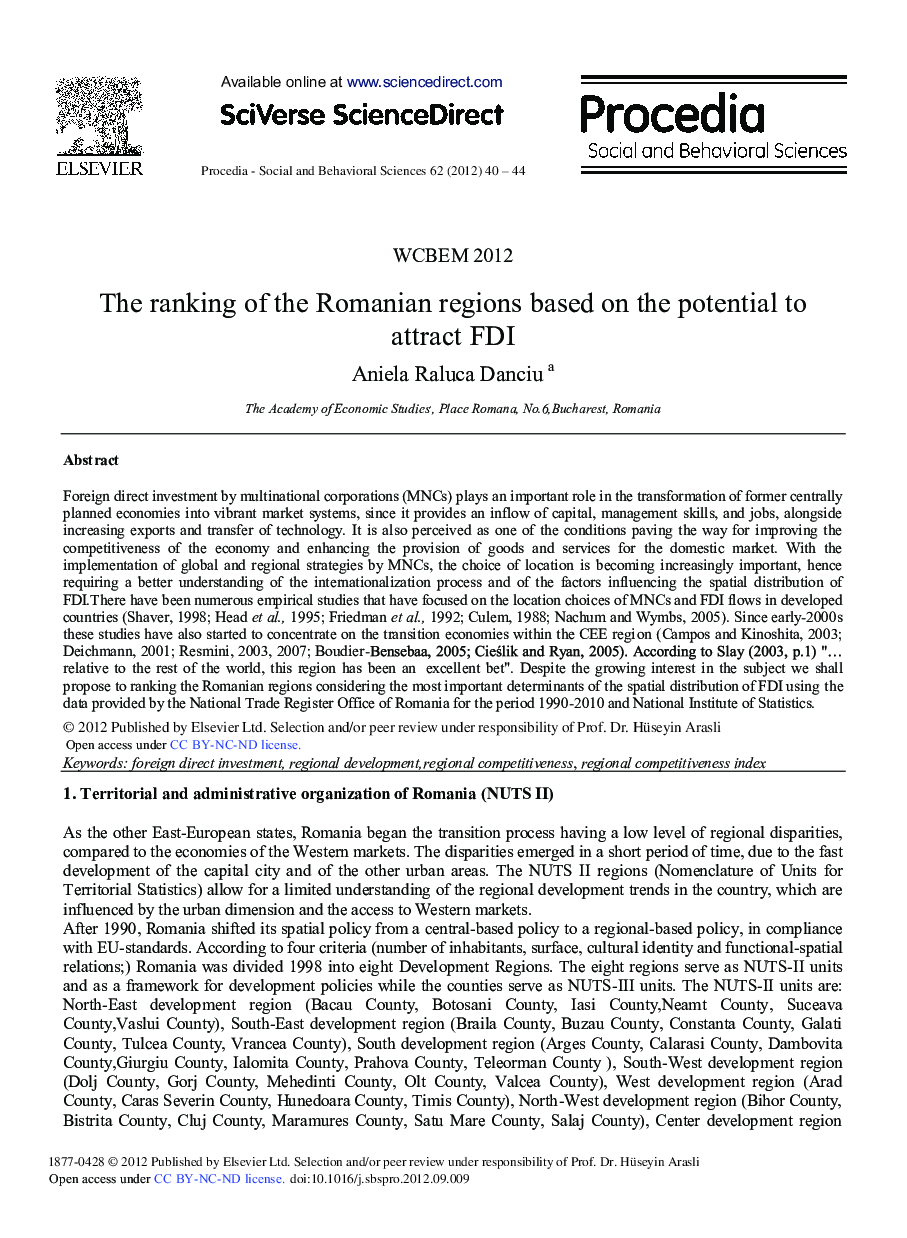| Article ID | Journal | Published Year | Pages | File Type |
|---|---|---|---|---|
| 1120312 | Procedia - Social and Behavioral Sciences | 2012 | 5 Pages |
Foreign direct investment by multinational corporations (MNCs) plays an important role in the transformation of former centrally planned economies into vibrant market systems, since it provides an inflow of capital, management skills, and jobs, alongside increasing exports and transfer of technology. It is also perceived as one of the conditions paving the way for improving the competitiveness of the economy and enhancing the provision of goods and services for the domestic market. With the implementation of global and regional strategies by MNCs, the choice of location is becoming increasingly important, hence requiring a better understanding of the internationalization process and of the factors influencing the spatial distribution of FDI.There have been numerous empirical studies that have focused on the location choi ces of MNCs and FDI flows in developed countries (Shaver, 1998; Head et al., 1995; Friedman et al., 1992; Culem, 1988; Nachum and Wymbs, 2005). Since early-2000s these studies have also started to concentrate on the transition economies within the CEE regi on (Campos and Kinoshita, 2003; Deichmann, 2001; Resmini, 2003, 2007; Boudier-Bensebaa, 2005; Cieślik and Ryan, 2005). According to Slay (2003, p.1) “… relative to the rest of the world, this region has been an excellent bet”. Despite the growing interest in the subject we shall propose to ranking the Romanian regions considering the most important determinants of the spatial distribution of FDI using the data provided by the National Trade Register Office of Romania for the period 1990-2010 and National Institute of Statistics.
